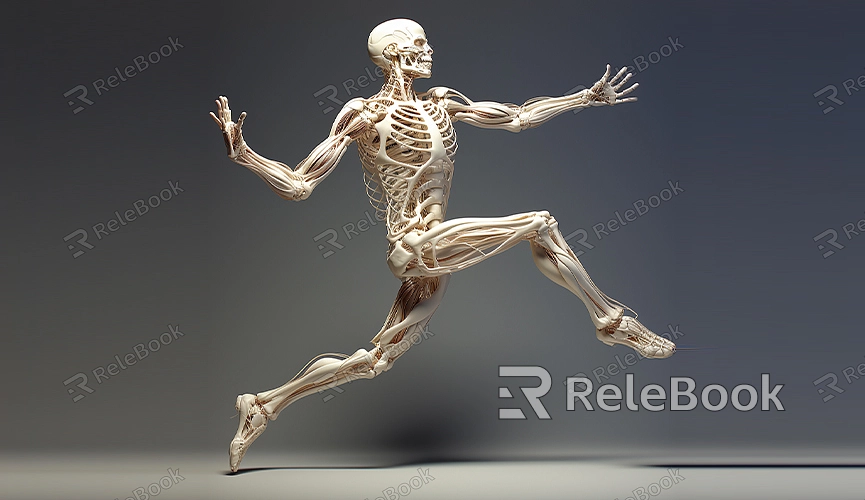Blender Bone Texture
In Blender, by finely controlling bone textures, we can render models to simulate the shape, structure, and even detailed texture of real-world bones. This approach adds a deeper sense of realism and dimension to the model, making it appear more lifelike. Bone textures extend beyond a singular material, covering various scenes and material characteristics, ranging from simulating bones to creating eerie horror scenes, ancient artifacts to mechanical components in a sci-fi world, showcasing their wide-ranging applications. Today, let's briefly explore the importation method of bone textures in Blender and their rendering applications across multiple scenes.

Steps for Importing Bone Texture:
1. Select Model: Open Blender and choose the 3D model to which you want to apply bone texture.
2. Material Editing: In the Properties Editor, select the "Material" tab.
3. Create New Material: Click "New" to create a new material.
4. Node Editor: In the "Shader" editor, use the node workflow to add the bone texture to the material.
5. Add Texture: In the "Shader Nodes," click "Add Texture" and choose the desired type of bone texture.
6. Choose File: Use the file browser to select the bone texture file, typically in JPEG, PNG, or other image file formats.
7. Texture Adjustments: Adjust mapping, color, transparency, and other parameters in the node editor to ensure the texture correctly adheres to the model's surface.
Examples of Bone Texture Application in Different Scenes:
1. Ancient Artifact Simulation: When simulating ancient bones or relics, importing the texture of old bones adds a sense of cracks and traces of time.
2. Horror Scene Modeling: Used for creating horror game or movie scenes, bone textures can present a dark, eerie skeletal texture, enhancing the scene's ominous atmosphere.
3. Biological Model Simulation: When simulating biological bones, bone textures can showcase details and gloss on the bone surface, adding realism to the biological model.
4. Sci-Fi Mechanical Components: Used in designing sci-fi-style mechanical components, bone textures can give mechanical parts a metallic shine and texture.
5. Cartoon-Style Characters: For cartoon-style character models, importing specific bone textures can create cartoon-style bone outlines, adding visual appeal.
6. Ghost or Undead Modeling: Used for creating fantasy or supernatural-themed scenes, bone textures can bring a ghost-like transparency and unique texture.
7. 3D Printing Models: When designing 3D printing models, bone textures can showcase surface details and dimension, enhancing print quality.
8. Mysterious Scene Rendering: Used for rendering mysterious scenes or ancient mythological themes, bone textures can present a mysterious and ancient texture, creating a mysterious atmosphere.
These examples showcase the diverse applications of bone textures in different scenes. Each texture has its unique characteristics, and through precise parameter adjustments and application in Blender, it can render more realistic 3D scenes and model effects. For more high-quality textures, you can download them easily from Relebook and import them directly into your models.

